Brunsviger is a traditional Danish coffee cake made with soft, fluffy yeast dough and topped with a gooey brown sugar–butter mixture. As it bakes, the topping melts into the dough, creating irresistible caramel-like pockets. It’s best enjoyed slightly warm, with a cup of coffee!
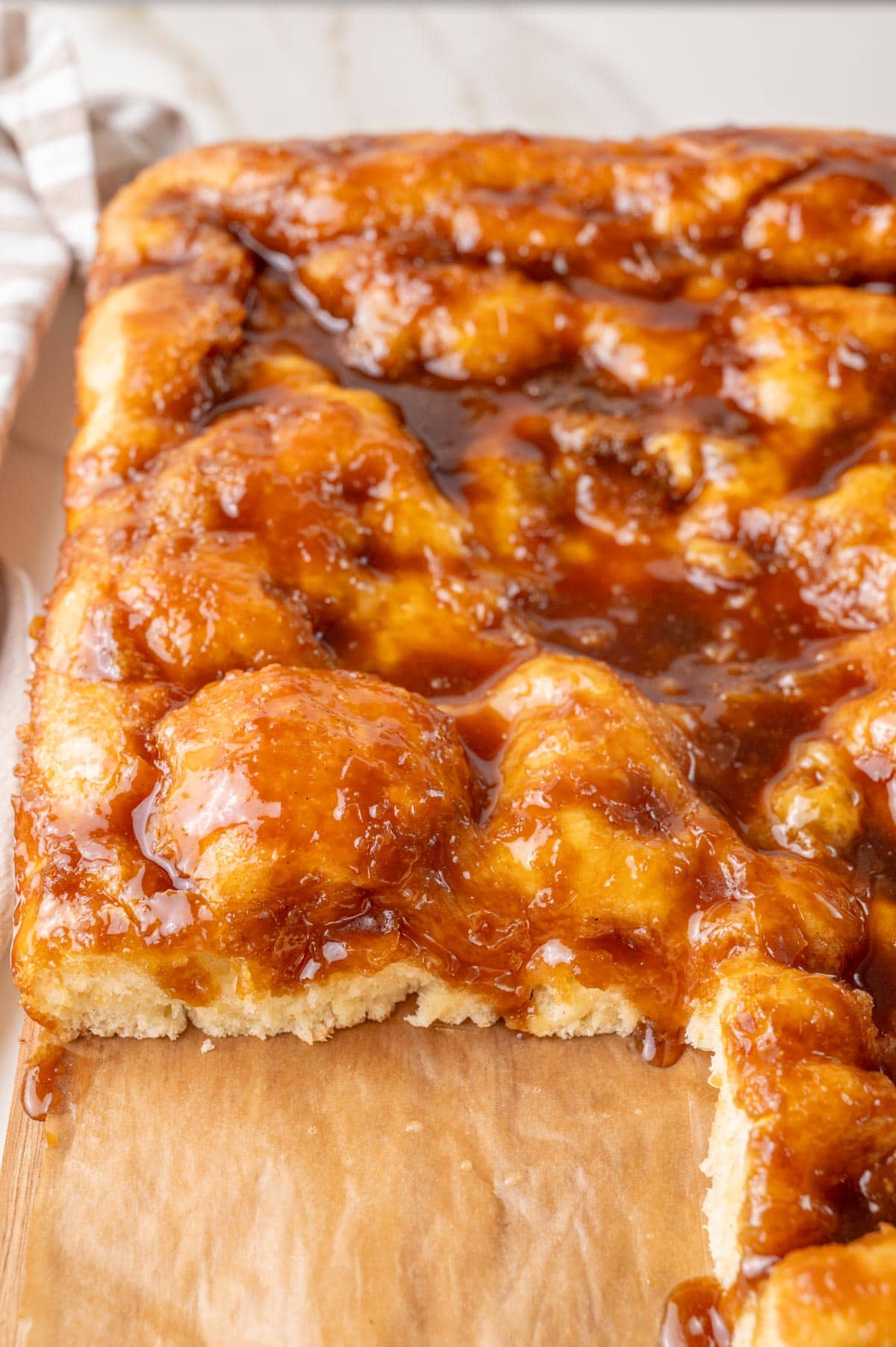
Brunsviger cake
Brunsviger (pronounced “broon-svee-er”) is a traditional Danish yeast cake with a rich brown-sugar-and-butter topping that melts into the soft dough as it bakes. It’s so iconic on the island of Funen (Fyn) that locals often call it the region’s “national dish.” People serve it on Sundays and for birthdays—especially for kids—often decorated with candles, candy, and little Danish flags. On Funen, you can find it in almost every bakery, but in other parts of Denmark, it’s less common or even unknown. Many people believe Brunsviger has German roots—the name points to the German city of Braunschweig (Brunswick). Not everyone agrees, though; some say it’s simply a Funen specialty that became iconic there, whatever its origin. The first known written mentions of Brunsviger in Denmark appear in a 1830 newspaper advertisement and in a cookbook from 1859.
Ingredients
Here’s what you need for Brunsviger cake:
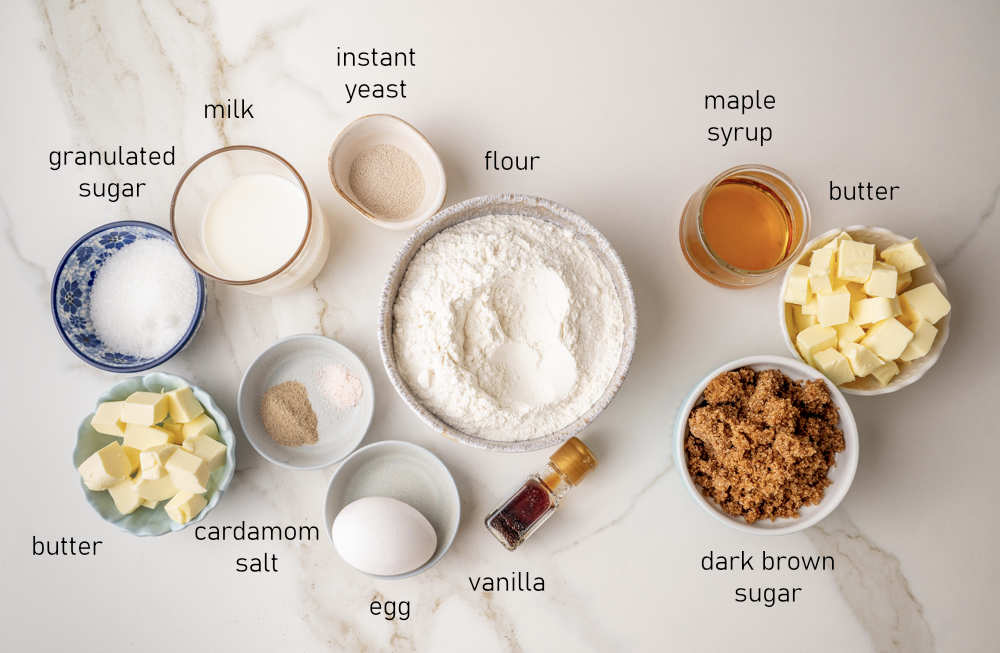
Brunsviger is made from easy-to-find ingredients except for one: Danish “brun farin” sugar, which is white sugar mixed with cane sugar syrup. After our trip to Denmark this summer, I baked the cake several times with regular light brown sugar and couldn’t figure out why the topping was paler, less sticky, and different in texture. Only after our next visit—when I bought the real “brun farin”—did the recipe turn out exactly like the cakes we tasted in Denmark. You can absolutely make a wonderful Brunsviger at home with substitutes, but it won’t be quite the same – so don’t be surprised if it looks or tastes a little different from what you tried in Denmark.
If you don’t have access to “brun farin,” the best substitute is dark muscovado sugar for its deep flavor and high molasses content. Dark brown sugar also works, or you can mix light brown sugar with a tablespoon of molasses.
No matter which sugar you use, I’m sure you’ll be thrilled with the results—this cake is absolutely wonderful. The most important thing is the cake-to-topping ratio, with lots of sticky topping literally dripping over the soft yeast dough. You have to try it—you won’t regret it!
How to make it step-by-step
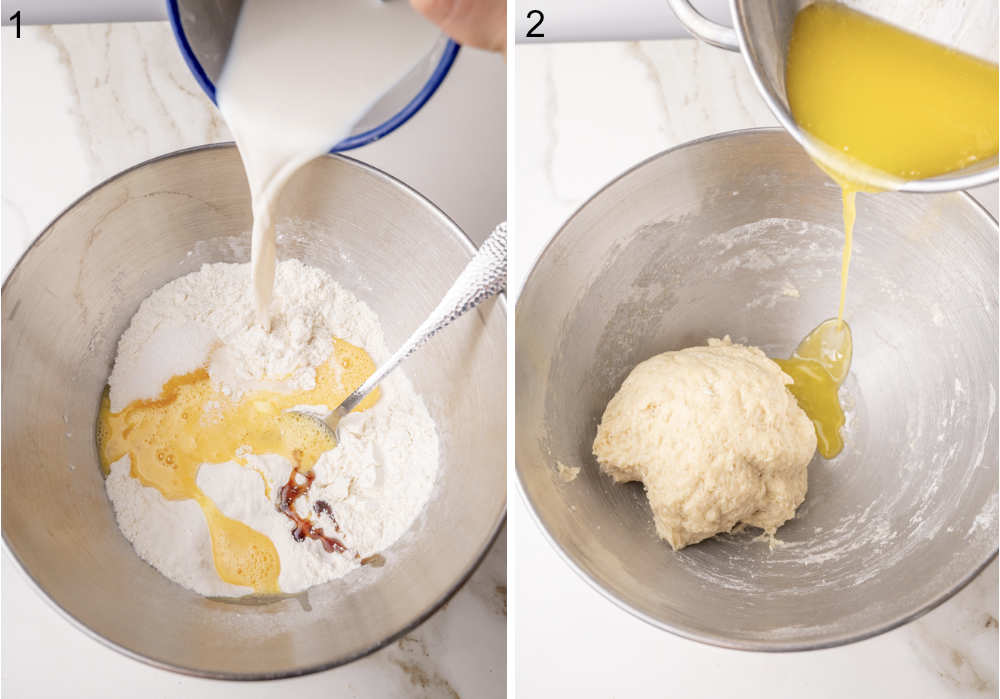
Make the dough:
STEP 1: Warm up the milk until it reaches the temperature of 100–110°F (38–43°C) or feels pleasantly warm to the touch. Stir in the yeast until dissolved.
In a large mixing bowl, stir together flour, cardamom, salt, and sugar. Add the lightly beaten egg and vanilla, then pour in the milk-yeast mixture.
(½ cup (120ml) milk, 1 package (2 ¼ teaspoons or 7g) instant yeast, 2 ¼ cups (280g) flour, 3/4 teaspoon ground cardamom, ¼ teaspoon salt, 3 tablespoons sugar, 1 large egg, lightly beaten, 1 teaspoon vanilla extract)
Measuring flour: I use the spoon-and-level method (1 cup = 125g). Fluff the flour, spoon it into your cup, then level it with a knife. A digital scale will give the best and most consistent results.
STEP 2: Knead the ingredients until just combined, then gradually add the melted, slightly cooled butter and mix until incorporated.
(¼ cup (60g) butter)
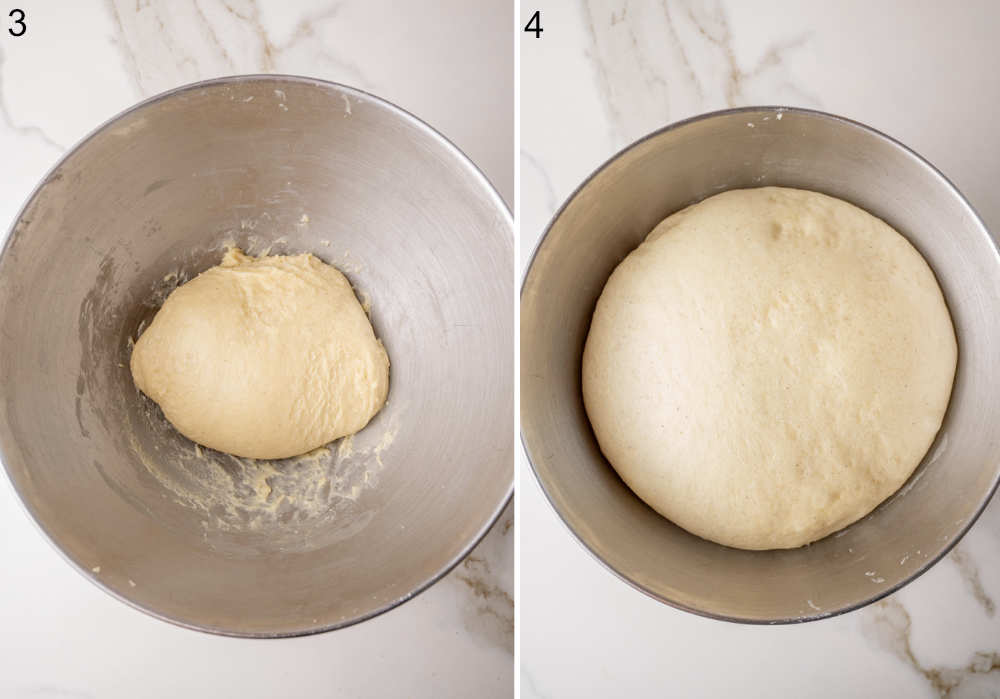
STEP 3: Knead the dough by hand for 10-15 minutes or with a hand mixer fitted with a dough hook for about 5-10 minutes, until a smooth dough forms. If using a mixer, the dough will still be quite sticky—when it’s nearly ready, transfer it to the counter and knead by hand, preferably stretching and folding it until a smooth ball forms. If it remains a little sticky, that’s fine—just return it to the bowl.
STEP 4: Cover the bowl with plastic wrap and let rise in a warm place until doubled in size, about 1 hour. I usually place it in a turned-off oven with the light on.
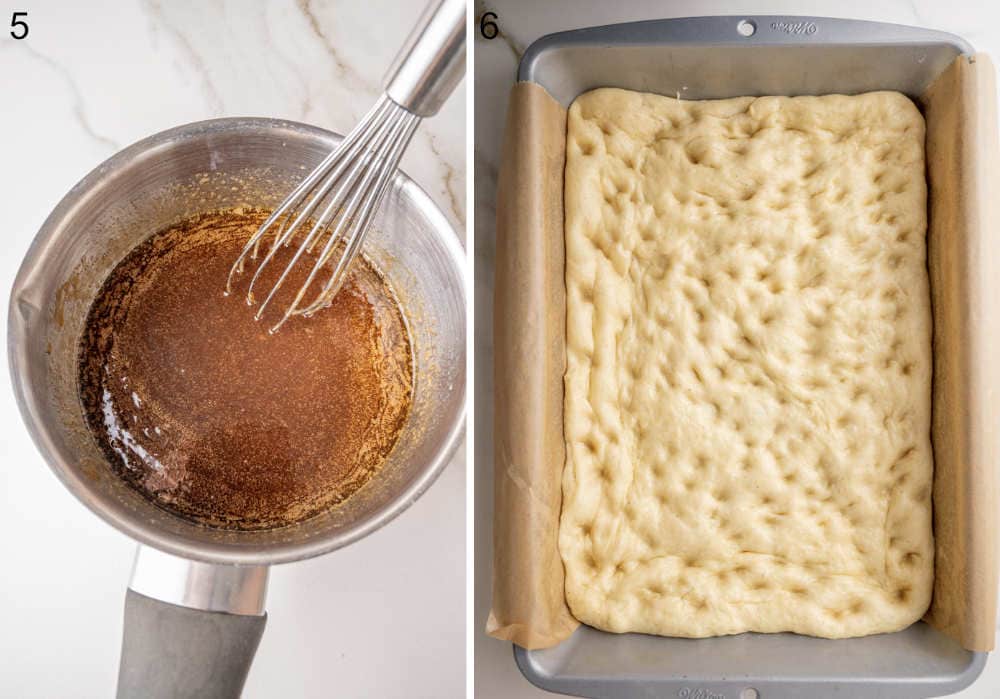
STEP 5: Meanwhile, make the topping: When the dough is nearly done rising, prepare the topping. In a small pot, combine all the topping ingredients and cook over medium heat until the butter is melted and the mixture is very hot. Once you see the first bubble, remove the pot from the heat and set aside to cool slightly.
(½ cup (115g) butter, ¾ cup (150g) dark brown sugar or dark muscovado sugar, or Danish “brun farin” sugar if you have access to it, or light brown sugar + 1 tablespoon molasses, 2 tablespoons maple syrup, 1 teaspoon vanilla extract, Small pinch of salt)
Preheat the oven to 400°F (200°C).
Line a 9×13 inch (23×33 cm) baking pan with parchment paper.
Assemble the cake:
STEP 6: Transfer the risen dough to the prepared pan and stretch it gently to cover the bottom of the baking pan. Cover with a kitchen towel and let rise again for 15 minutes while the oven preheats and the topping continues to cool.
After 15 minutes, use your fingers to make many deep indentations in the dough, similar to focaccia.

STEP 7: Whisk the warm topping very thoroughly and pour it evenly over the dough.
STEP 8: Bake the cake: Place the baking pan in the oven and bake for about 15 minutes, or until golden and puffed.
Some parts of the cake rise more than others, so the topping can slide off and collect in the lower spots. If that happens, you can spoon some of the hot topping over the areas that don’t have enough—just do it right after baking while the topping is still hot.
Let cool slightly and enjoy while still warm.
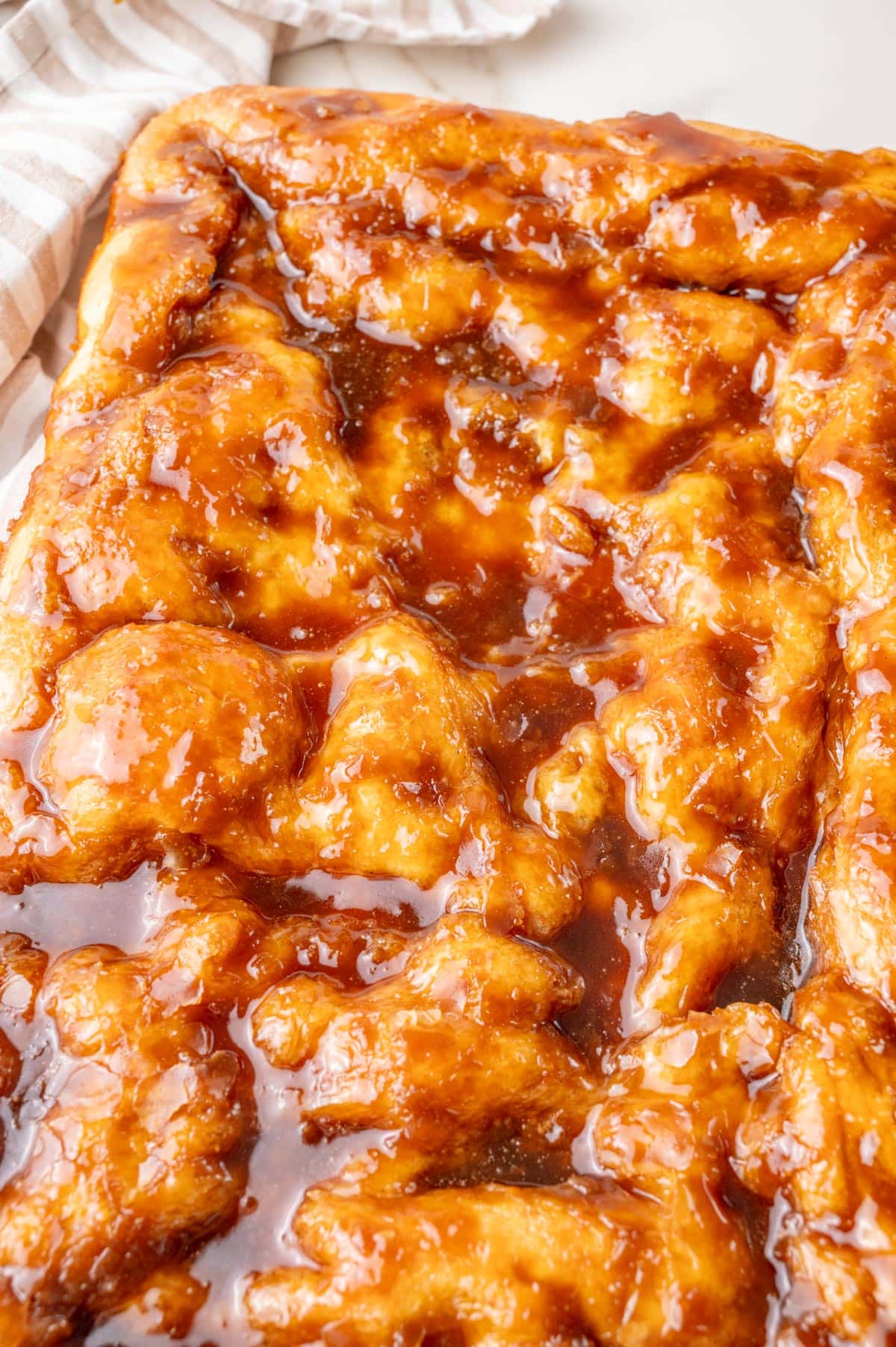
Storage
It’s best the day it’s baked. If you have leftovers, store the cake covered/airtight at room temperature for up to 3 days. Rewarm before serving so the topping is soft and gooey again—about 5–8 minutes in a 300°F (150°C) oven (or a few seconds in the microwave). It will get drier as it sits.
More Danish recipes for you to try

Did you make this recipe? RATE THE RECIPE or tell me in the COMMENTS how you liked it! You can also add a photo of your dish. It would make me very happy and will help other readers. Thank you!!
Brunsviger – Danish Coffee Cake
Ingredients
For the yeast dough:
- ½ cup (120ml) milk
- 1 package (2 ¼ teaspoons or 7g) instant yeast
- 2 ¼ cups (280g) flour
- 3/4 teaspoon ground cardamom
- ¼ teaspoon salt
- 3 tablespoons sugar
- 1 large egg lightly beaten
- 1 teaspoon vanilla extract
- ¼ cup (60g) butter melted and slightly cooled
For the topping:
- ½ cup (115g) butter
- ¾ cup 150g dark brown sugar or dark muscovado sugar or Danish “brun farin” sugar if you have access to it, or light brown sugar + 1 tablespoon molasses
- 2 tablespoons maple syrup
- 1 teaspoon vanilla extract
- Small pinch of salt
Would you like to save this?
Instructions
Make the dough:
- Warm up the milk until it reaches the temperature of 100–110°F (38–43°C) or feels pleasantly warm to the touch. Stir in the yeast until dissolved.½ cup (120ml) milk, 1 package (2 ¼ teaspoons or 7g) instant yeast
- In a large mixing bowl, stir together flour, cardamom, salt, and sugar. Add the lightly beaten egg and vanilla, then pour in the milk-yeast mixture.2 ¼ cups (280g) flour, 3/4 teaspoon ground cardamom, ¼ teaspoon salt, 3 tablespoons sugar, 1 large egg, 1 teaspoon vanilla extract
- Knead the ingredients until just combined, then gradually add the melted, slightly cooled butter and mix until incorporated.¼ cup (60g) butter
- Knead the dough by hand for 10-15 minutes or with a hand mixer fitted with a dough hook for about 5-10 minutes, until a smooth dough forms. If using a mixer, the dough will still be quite sticky—when it’s nearly ready, transfer it to the counter and knead by hand, preferably stretching and folding it until a smooth ball forms. If it remains a little sticky, that’s fine—just return it to the bowl.
- Cover the bowl with plastic wrap and let rise in a warm place until doubled in size, about 1 hour. I usually place it in a turned-off oven with the light on.
Meanwhile, make the topping:
- When the dough is nearly done rising, prepare the topping. In a small pot, combine all the topping ingredients and cook over medium heat until the butter is melted and the mixture is very hot. Once you see the first bubble, remove the pot from the heat and set aside to cool slightly.½ cup (115g) butter, ¾ cup 150g dark brown sugar or dark muscovado sugar, 2 tablespoons maple syrup, 1 teaspoon vanilla extract, Small pinch of salt
- Preheat the oven to 400°F (200°C).
- Line a 9×13 inch (23×33 cm) baking pan with parchment paper.
Assemble the cake:
- Transfer the risen dough to the prepared pan and stretch it gently to cover the bottom of the baking pan. Cover with a kitchen towel and let rise again for 15 minutes while the oven preheats and the topping continues to cool.
- After 15 minutes, use your fingers to make many deep indentations in the dough, similar to focaccia.
- Whisk the warm topping very thoroughly and pour it evenly over the dough.
Bake the cake:
- Place the baking pan in the oven and bake for about 15 minutes, or until golden and puffed.
- Some parts of the cake rise more than others, so the topping can slide off and collect in the lower spots. If that happens, you can spoon some of the hot topping over the areas that don’t have enough—just do it right after baking while the topping is still hot.
- Let cool slightly and enjoy while still warm.





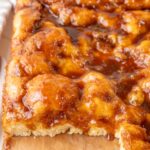
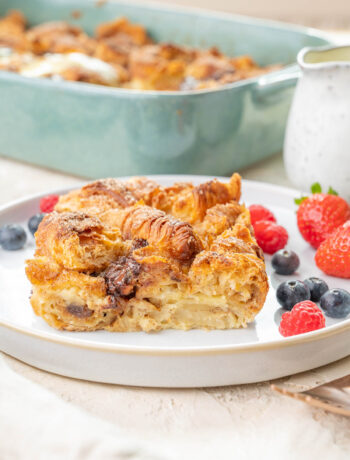


No Comments